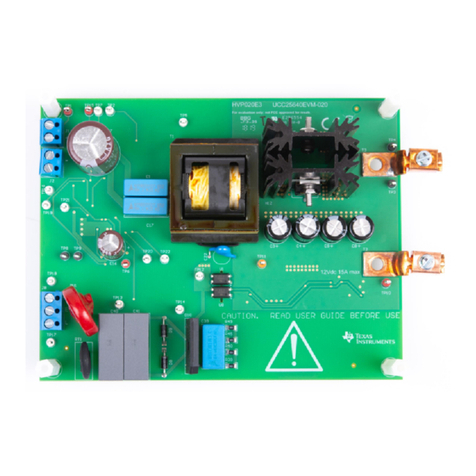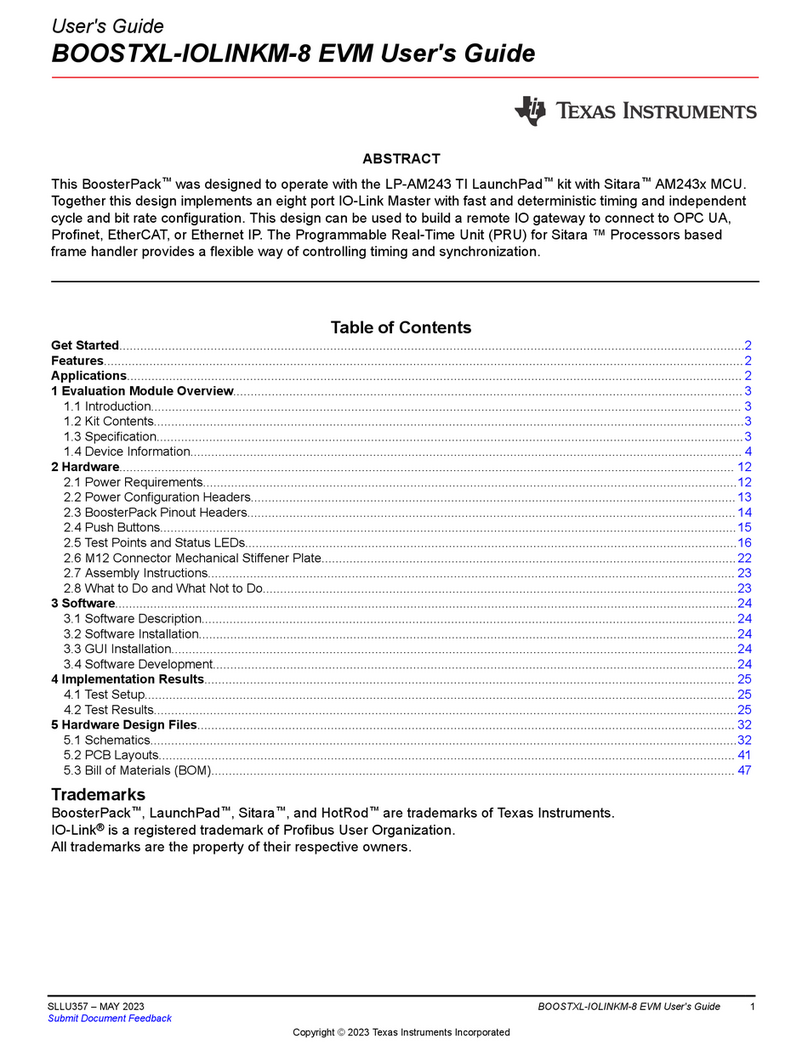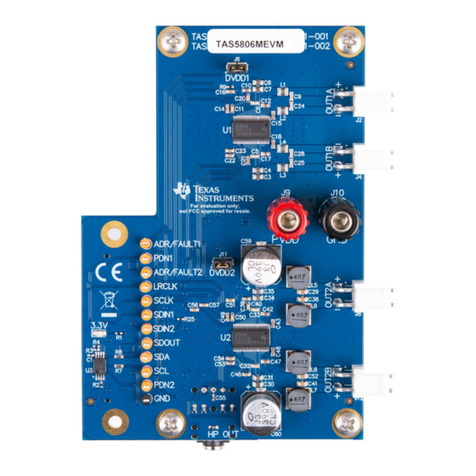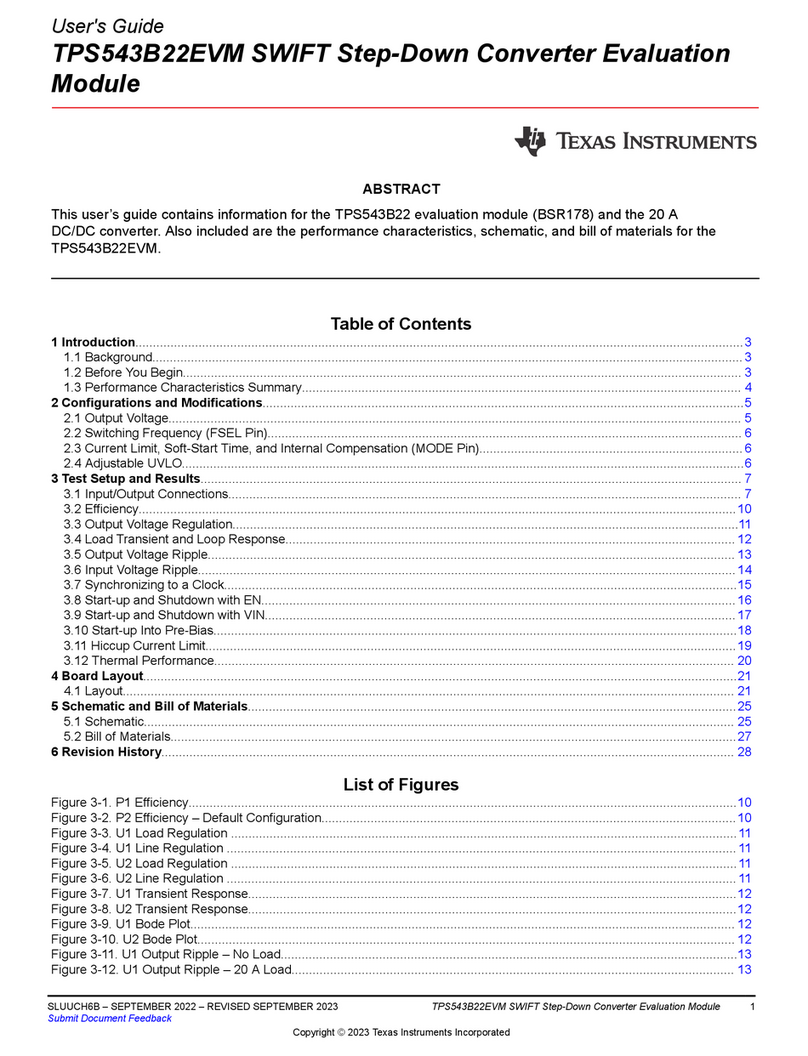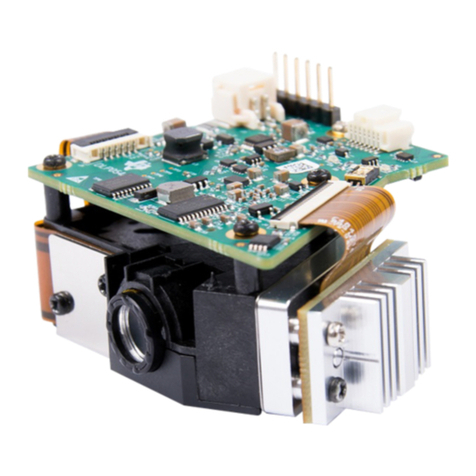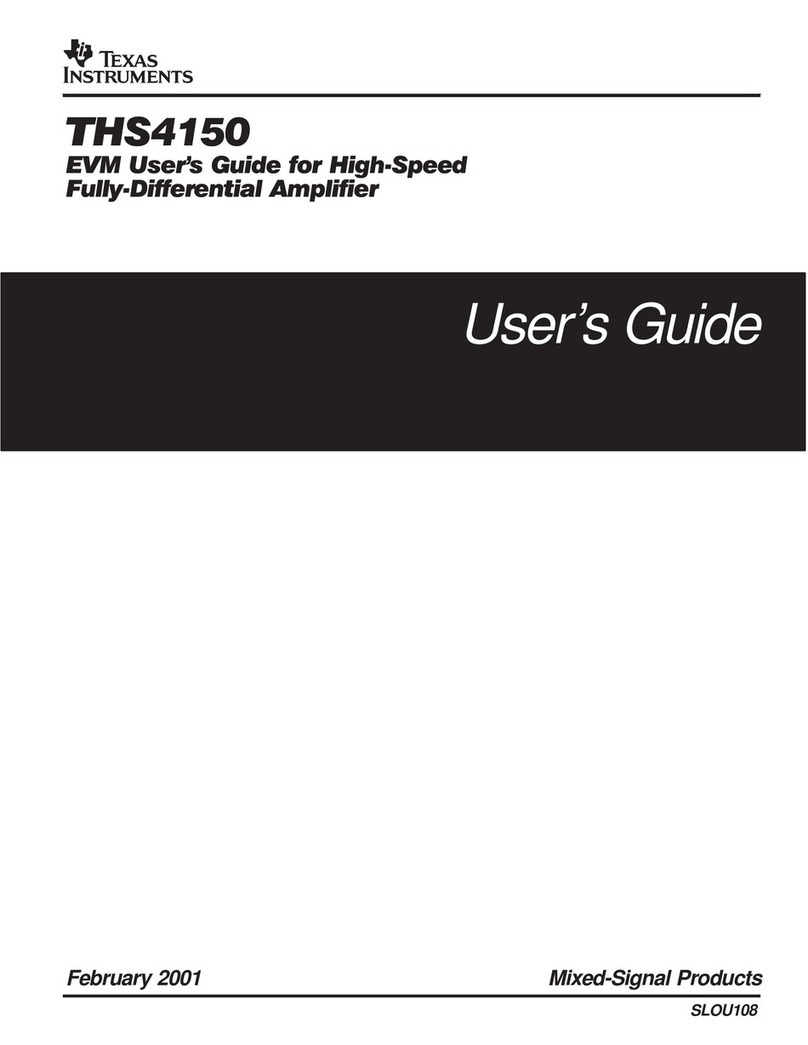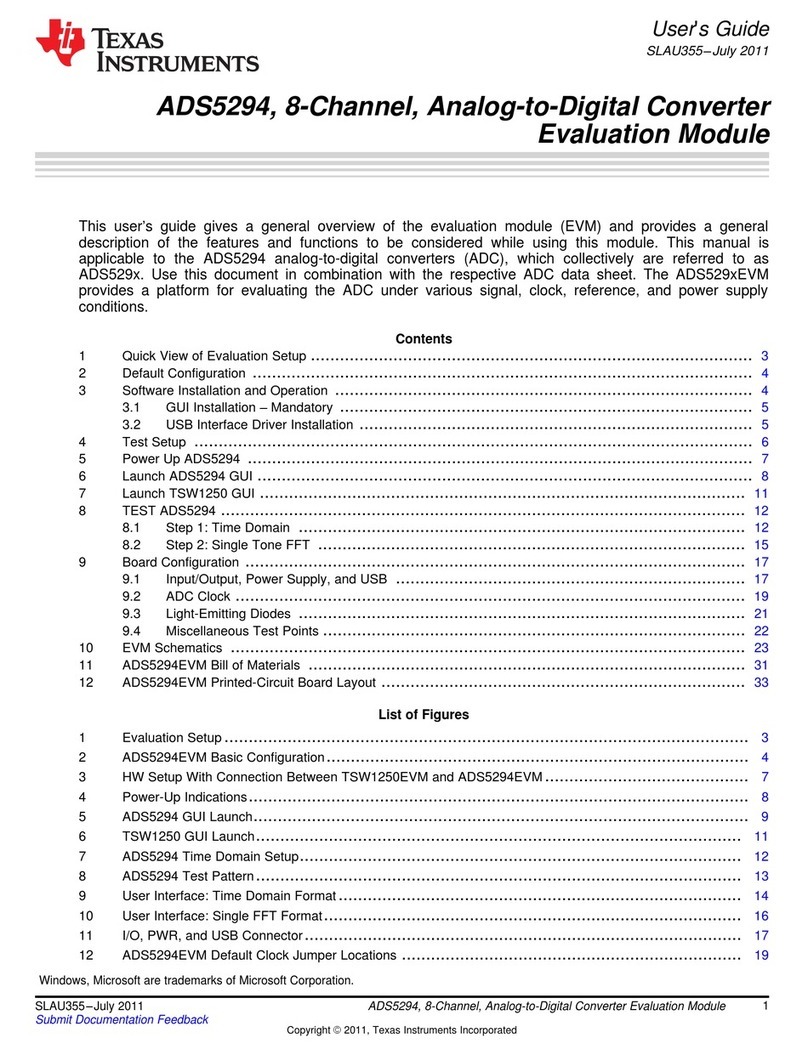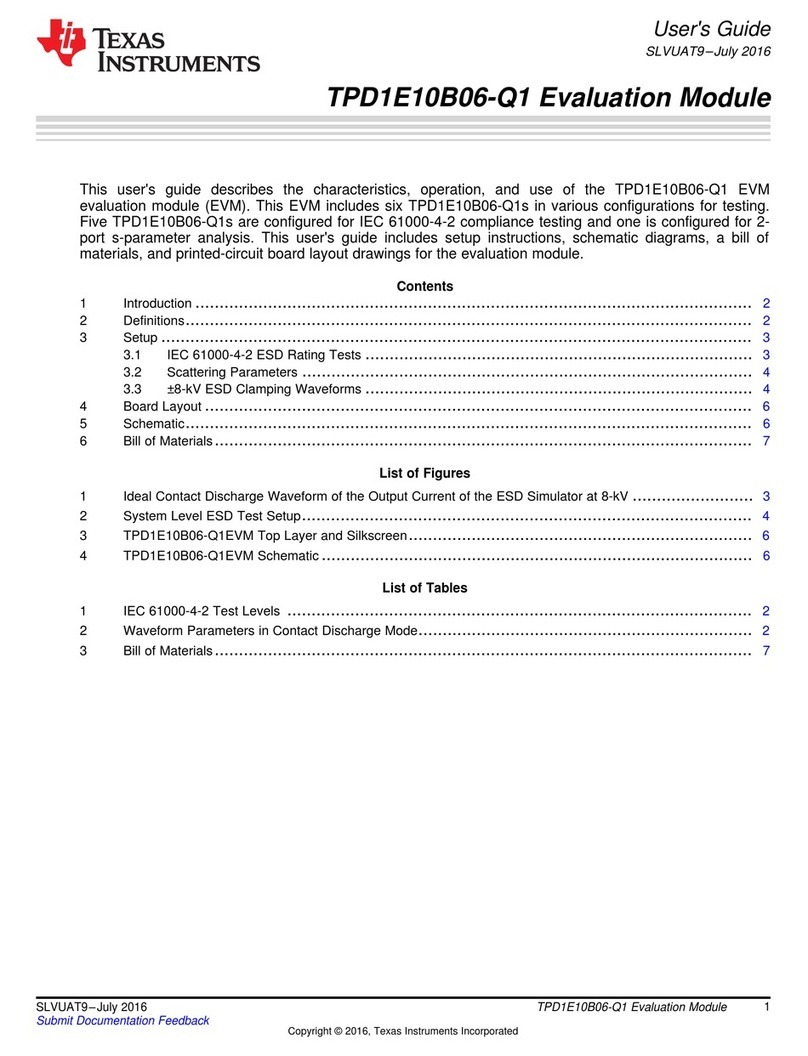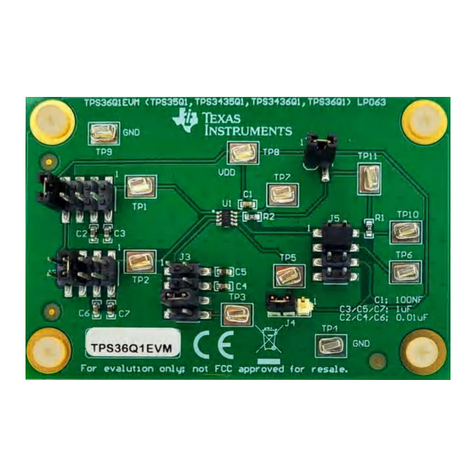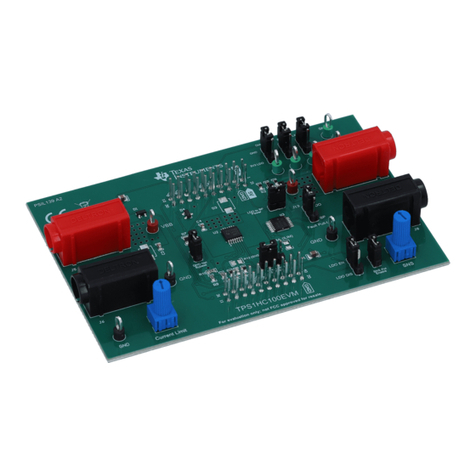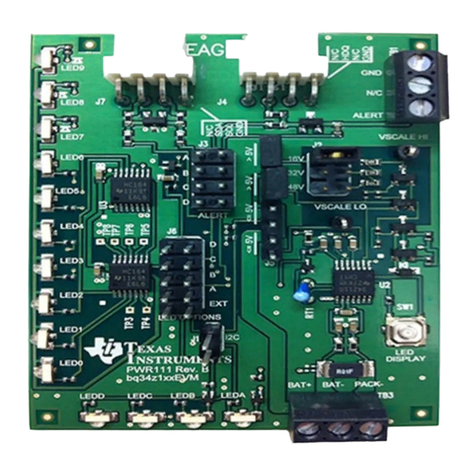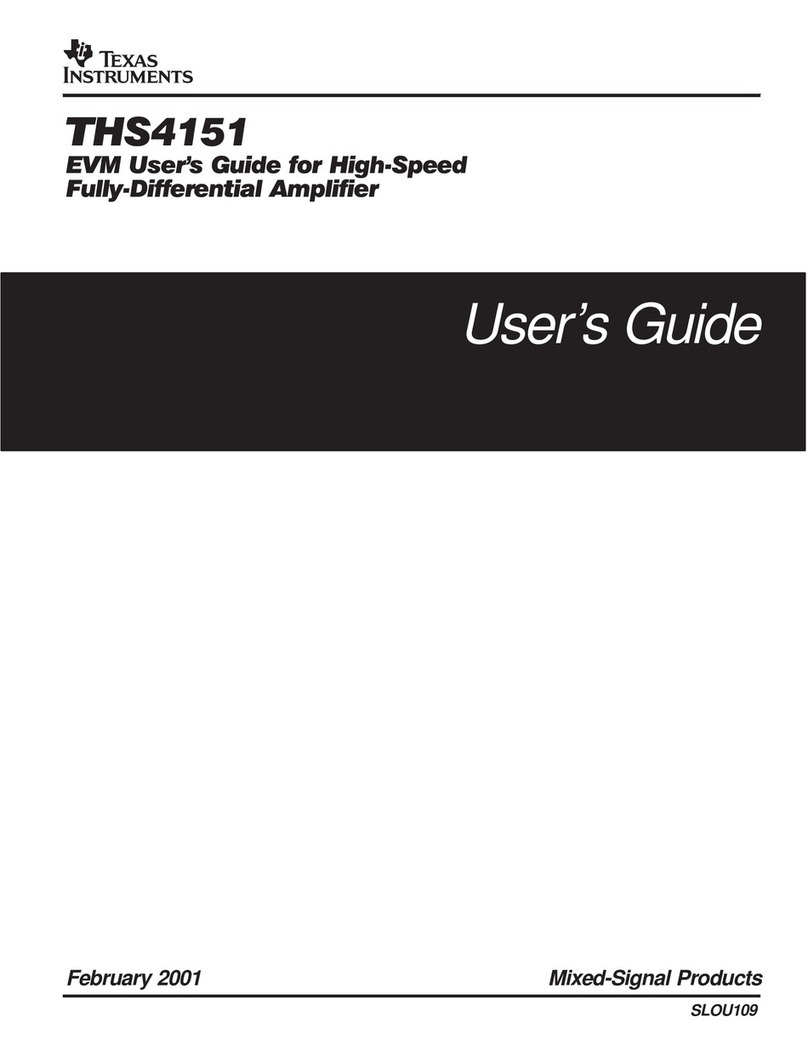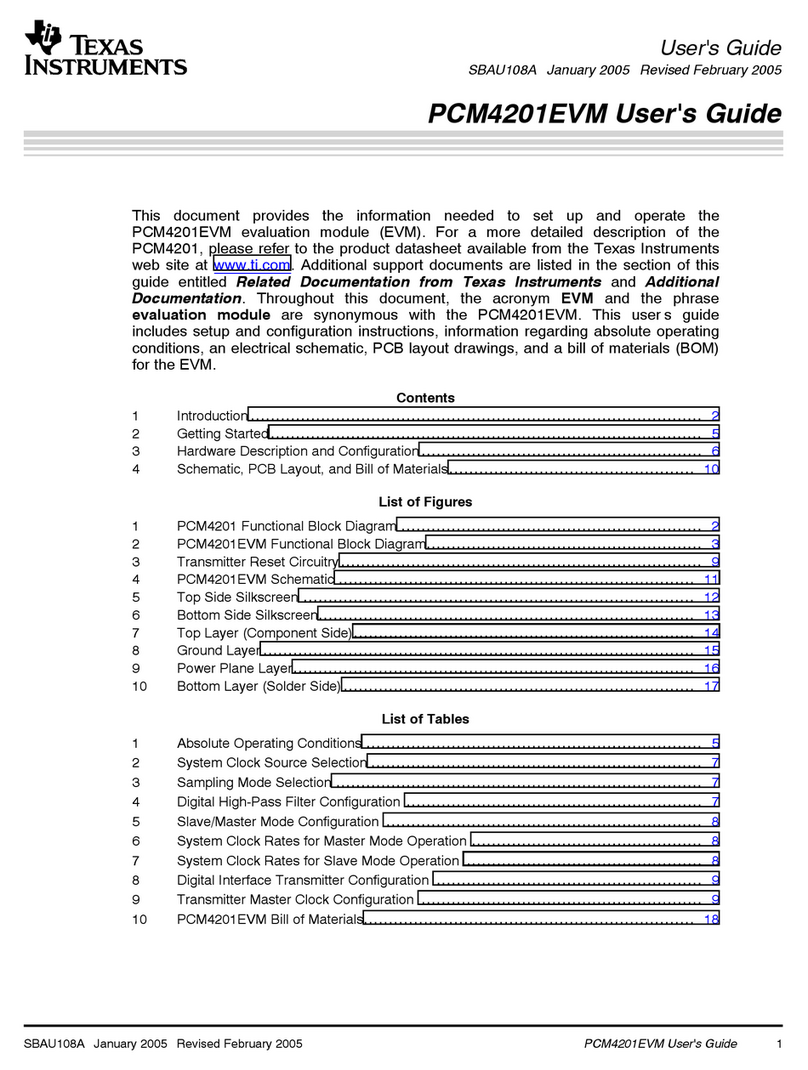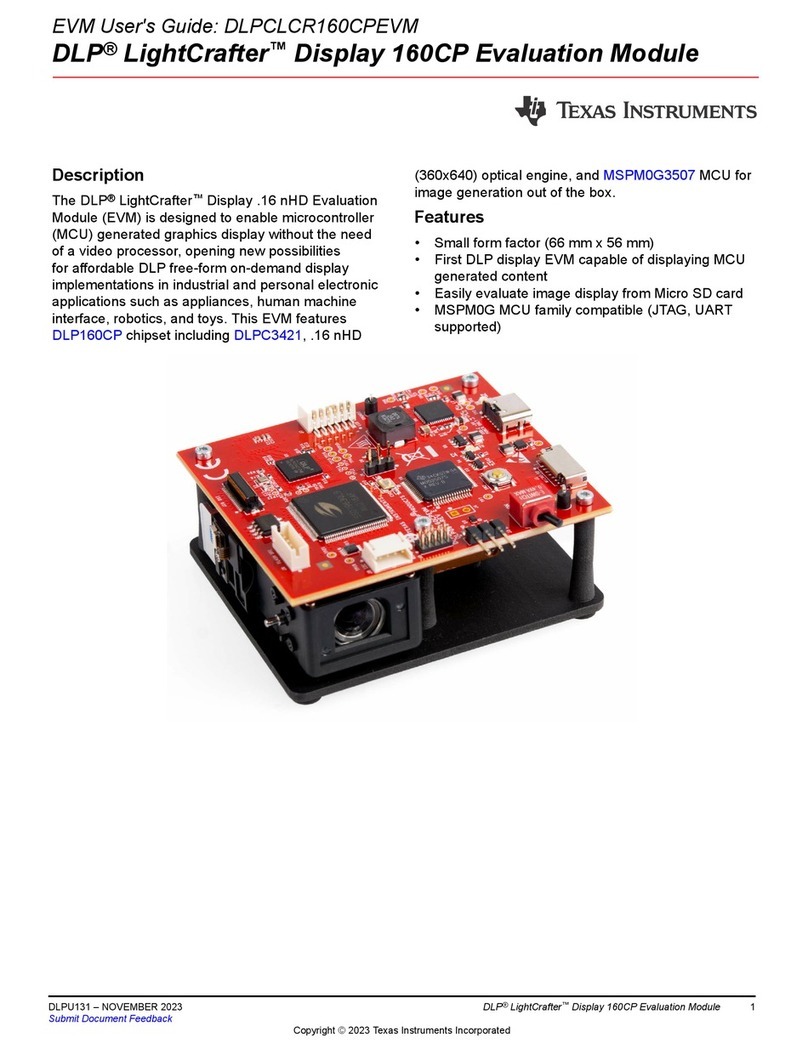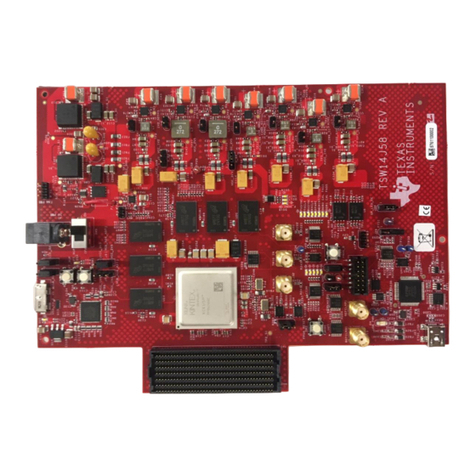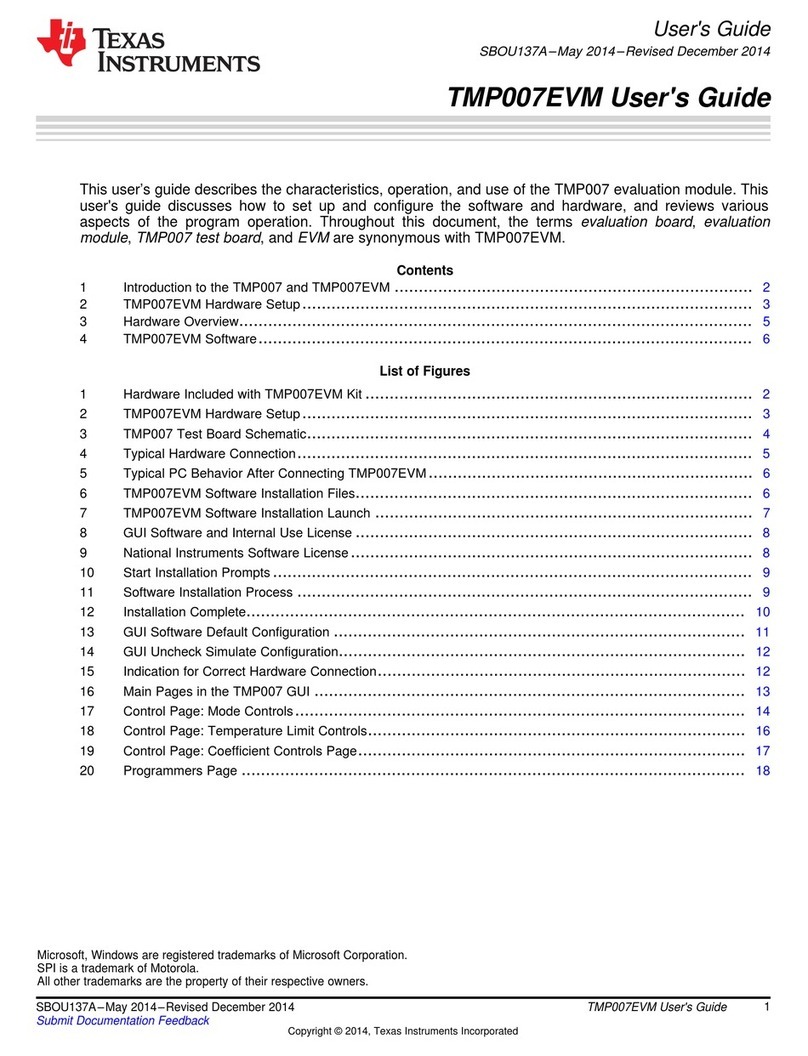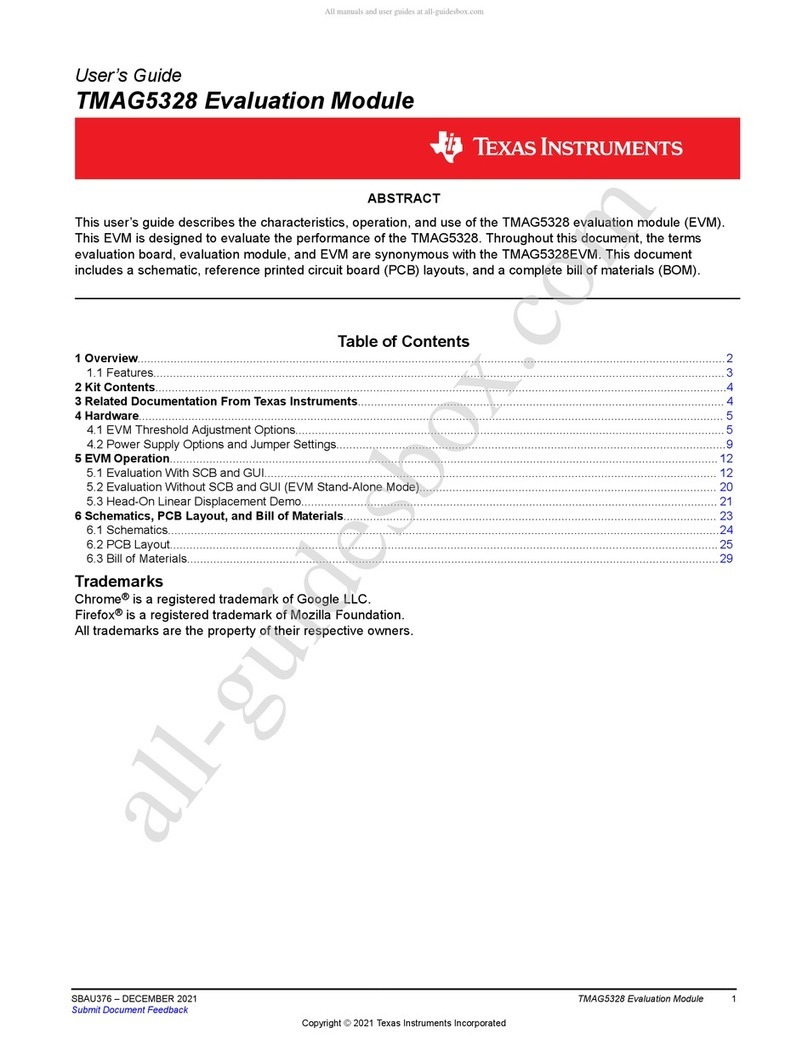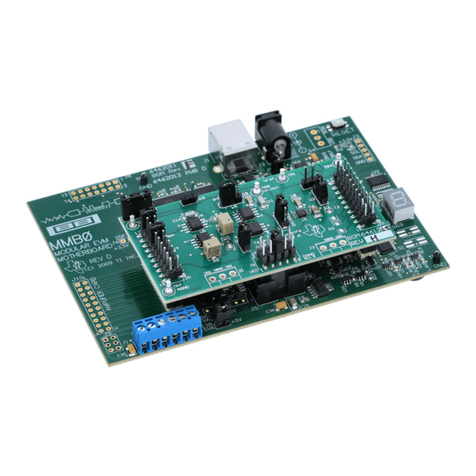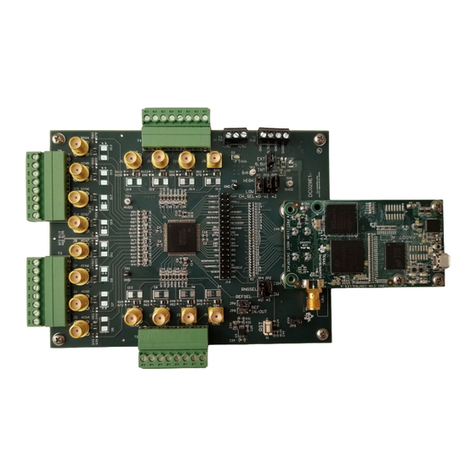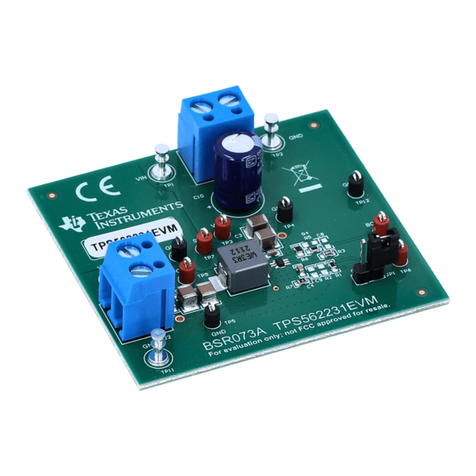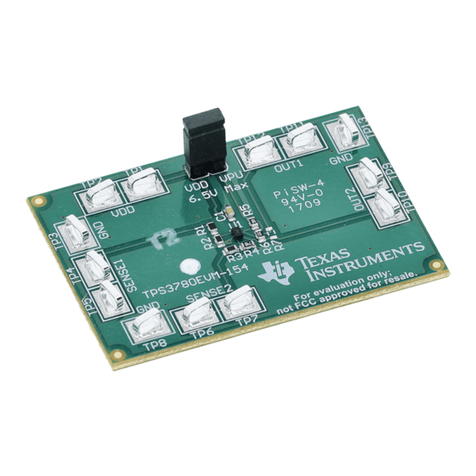
User's Guide
TPS25984 Evaluation Module (EVM)
ABSTRACT
This user’s guide describes the evaluation module (EVM) for the TPS25984 eFuse. The TPS25984 device is
a 4.5-V to 16-V and 70-A (peak) stackable eFuse with accurate and fast current monitor. This device supports
parallel connection of multiple eFuses for higher current designs by actively synchronizing the device states
and sharing the loads during start-up and steady-state. The TPS25984 eFuse has an integrated FET with
ultra-low ON resistance of 0.8 mΩ, adjustable and robust overcurrent and short-circuit protections, precise load
current monitoring, fast overvoltage protection (fixed 16.7-V threshold), adjustable output slew rate control for
inrush-current protection, and overtemperature protection to verify FET SOA. The TPS25984 eFuse also has
adjustable overcurrent transient blanking timer to support load transients, adjustable undervoltage protection,
integrated FET health monitoring and reporting, analog die temperature monitor output, and dedicated fault and
power good indication pins.
Caution
Caution Hot Surface.
Contact may cause burns.
Do not touch !
Table of Contents
1 Introduction.............................................................................................................................................................................3
1.1 EVM Features.................................................................................................................................................................... 3
1.2 EVM Applications............................................................................................................................................................... 3
2 Description.............................................................................................................................................................................. 3
3 Schematic................................................................................................................................................................................4
4 General Configurations..........................................................................................................................................................6
4.1 Physical Access................................................................................................................................................................. 6
4.2 Test Equipment.................................................................................................................................................................. 7
5 Test Setup and Procedures....................................................................................................................................................8
5.1 Hot Plug............................................................................................................................................................................. 9
5.2 Start-Up With Enable......................................................................................................................................................... 9
5.3 Difference Between Current Limit and DVDT Based Start-Up Mechanisms....................................................................10
5.4 Power Up Into Short......................................................................................................................................................... 11
5.5 Overvoltage Lockout........................................................................................................................................................ 12
5.6 Transient Overload Performance..................................................................................................................................... 13
5.7 Overcurrent Event............................................................................................................................................................ 14
5.8 Provision to Apply Load Transient and Overcurrent Event Using an Onboard Switching Circuit.....................................14
5.9 Output Hot Short.............................................................................................................................................................. 16
5.10 Quick Output Discharge (QOD)..................................................................................................................................... 17
5.11 Thermal Performance of TPS25984EVM....................................................................................................................... 17
6 EVAL Board Assembly Drawings and Layout Guidelines................................................................................................ 19
6.1 PCB Drawings..................................................................................................................................................................19
7 Bill of Materials (BOM)..........................................................................................................................................................22
8 Revision History................................................................................................................................................................... 26
List of Figures
Figure 3-1. TPS25984EVM eFuse Evaluation Board Schematic (Page 1)..................................................................................4
Figure 3-2. TPS25984EVM eFuse Evaluation Board Schematic (Page 2)..................................................................................5
www.ti.com Table of Contents
SLVUCH6A – JULY 2023 – REVISED NOVEMBER 2023
Submit Document Feedback
TPS25984 Evaluation Module (EVM) 1
Copyright © 2023 Texas Instruments Incorporated
